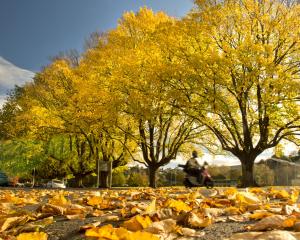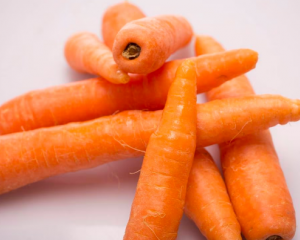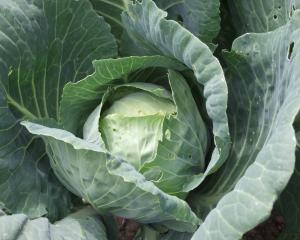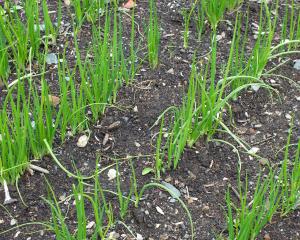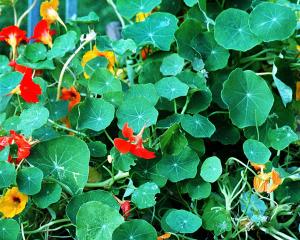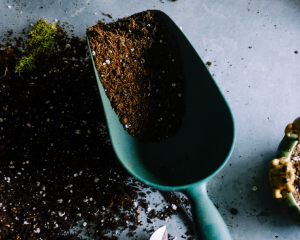Vegetables
Seed sowing does not really get under way until next month, but a start can be made if protection is available.
A glasshouse, whether the full-sized version or a mini type, is the place to sow trays of seeds now for planting out later.
For those with limited space, small upright greenhouses with lightweight framing and plastic covers are an inexpensive option but these structures are often not strong and need to be put in a sheltered spot.
When sowing under cover, warmth and moisture are essential. Be cautious at this time of the year, as too much moisture without sufficient warmth will cause many seeds to rot.
If they are overcrowded, young seedlings will be weak and can die in the seed tray, so thin sowing is advisable.
Lift out young seedlings as soon as possible, usually once the first pair of true leaves have formed, and place in bigger containers of good soil or potting mix to grow until big enough to put in the garden.
Rich, dry soil that was well dug in autumn can be used for peas. Add some lime and general fertiliser before seed-sowing. With a hoe, make a drill about 30cm wide. If the soil is likely to dry out from late spring, make the drill about 8cm deep so moisture will be held in hot weather. Sow seeds 5cm apart and cover with about 1cm of soil.
Broad beans may be sown from now until the end of September. Choose a variety, such as Imperial Green or Evergreen, that is recommended for spring sowing. Because broad beans are intolerant of hot, dry weather, crops will be poor if seed is sown too late.
Lettuce, cauliflower, cabbage and silverbeet can also be sown this month, ideally in boxes of sandy soil or seed-raising mix covered with a sheet of glass or plastic. Putting them under cloches or somewhere indoors is recommended when conditions are cold. They should be ready for planting out in early October.
Potatoes for a December harvest should be in early next month. Plant them closer than main-crop varieties — 30cm between tubers and 50cm between rows is enough. Place them 20cm or deeper in sandy soils, or 10cm deep in heavy, clay-like soils. Some superphosphate can be added to the soil at planting time if it was not well manured in autumn.
Flowers
Pansies and violas will grow almost anywhere but prefer a moist, rich soil with partial shade during midsummer. Sow seed now in seed trays. Scatter the seed thinly, cover lightly, then place a square of glass over the boxes. Once seedlings are through, remove the glass and keep plants in a cool position until they are strong enough to plant out. Some protection will be necessary if slugs and snails are present.
Rose planting should be completed soon as bushes will soon be making new seasons growth. Established roses can be pruned this month.
Annuals and biennials sown in the open in March and April should be encouraged to start the new seasons growth by having the soil around them stirred with a hoe. Thin any that have become overcrowded and work in a light dressing of blood and bone around plants. Varieties that wintered over in boxes will be ready to plant out as soon as the soil can be worked.
Flowering hedges can be a useful screen to separate flowers from vegetables or hide utilitarian aspects of the garden. Consider camellias, spiraea, forsythia, roses and fuchsias. A flowering hedge needs to be planted on well-dug soil, as it will be there for years. Allow enough space for growth.
Indoors, tender cyclamens showing flowers will benefit from a watering with liquid manure once a week. Indoor cyclamens do best in a moist atmosphere with an even temperature, free of cold draughts. Water in the saucer, not from the top.
Fruit
Because they have long growing seasons of four months or more from planting out to maturity, and need constant warmth, melons are usually grown in glasshouses in southern regions. However, some of the smaller-fruited rock melon varieties can be grown outdoors, as they mature faster. Look for Jenny Lind, Minnesota Midget or Tigger Moon. Plant seed under cover now and transplant outdoors when all danger of frost has passed. Outside a glasshouse where they soak up the warmth of the glass is ideal. Melons need very rich soil and seem to do better on a heap of compost to which plenty of manure has been added. Keep well watered in hot, dry weather.


